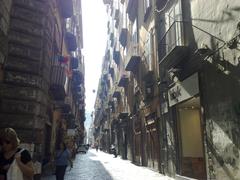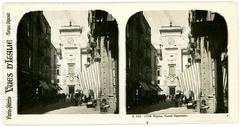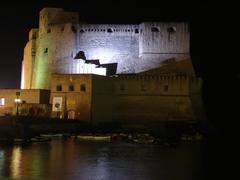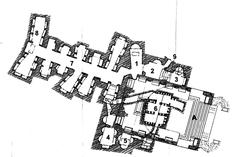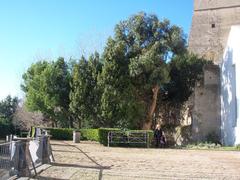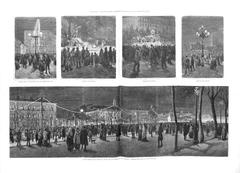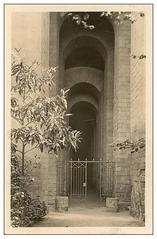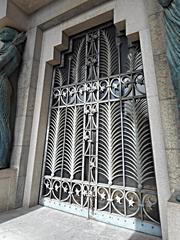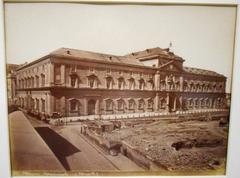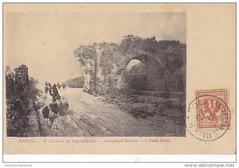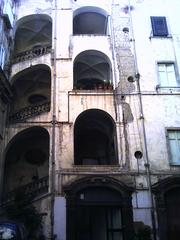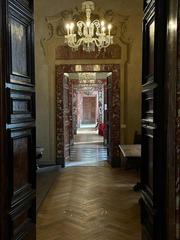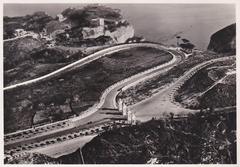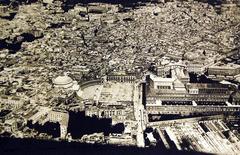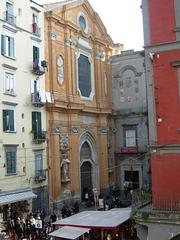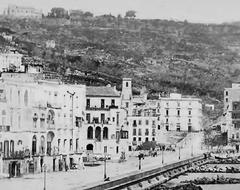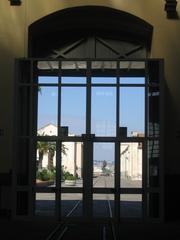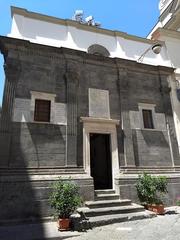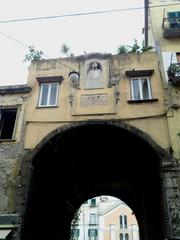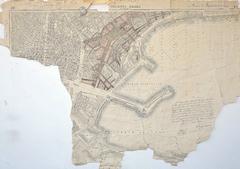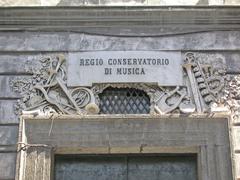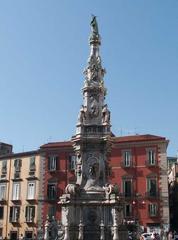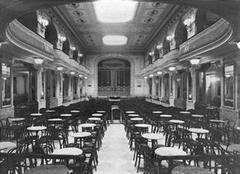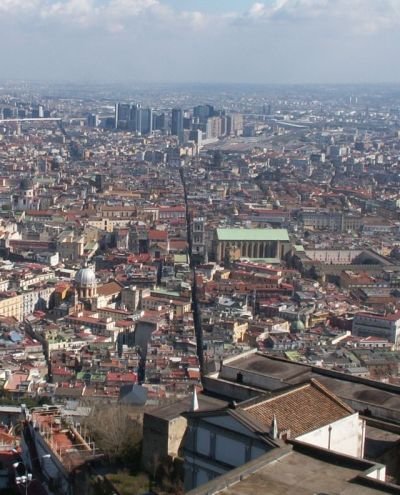
Comprehensive Guide to Visiting Spaccanapoli, Naples, Italy: History, Significance, Visitor Tips, and Everything Tourists Need to Know for a Memorable Experience
Date: 16/08/2024
Introduction
Spaccanapoli, often referred to as the ‘Naples Splitter,’ is a narrow, bustling street that runs through the heart of Naples’ historic center. More than just a thoroughfare, Spaccanapoli is a vivid tapestry of the city’s rich history, culture, and architectural wonders, making it a must-visit for anyone exploring Naples. The street’s origins trace back to ancient Greek and Roman times, following the path of the ancient decumanus inferior, one of the primary east-west streets laid out by the Romans. Over centuries, Spaccanapoli has evolved into a vibrant cultural and social hub, reflecting the spirit of Naples (Italylogue). From the medieval period’s bustling marketplaces to the Baroque era’s architectural grandeur, the street is lined with landmarks that encapsulate various historical epochs. Today, Spaccanapoli is a UNESCO World Heritage site, celebrated for its historical significance and the seamless blend of ancient and modern life (Culture Trip). This comprehensive guide aims to provide visitors with essential information on Spaccanapoli’s history, cultural significance, key landmarks, and practical tips to ensure a memorable experience.
Table of Contents
- Introduction
- Historical Background
- Key Historical Landmarks
- Visitor Information
- Cultural Significance
- Preservation Efforts
- FAQ
- Conclusion
Historical Background
Ancient Origins
Spaccanapoli, which translates to “Naples Splitter,” is a historic street that runs through the heart of Naples, Italy. Its origins date back to the ancient Greeks and Romans who first established the city. The street follows the path of the ancient decumanus inferior, one of the three main east-west streets (decumani) laid out by the Romans. This meticulous urban planning is evident in the straight, narrow path that Spaccanapoli follows, cutting through the city like an arrow (Italylogue).
Medieval and Renaissance Periods
During the medieval period, Spaccanapoli became a bustling center of commerce and daily life. The street was lined with shops, homes, and religious institutions, many of which still stand today. The Renaissance period brought further development and architectural advancements. Notable buildings from this era include the Church of Gesù Nuovo and the Santa Chiara Church, both of which are significant landmarks along Spaccanapoli (Naples-Napoli).
Baroque Influence
The Baroque period left a significant mark on Spaccanapoli, with many buildings and churches being constructed or renovated in the Baroque style. The Chiesa del Gesù Nuovo, for example, features a severe exterior with diamond-shaped stone projections, while its interior is a riot of Baroque excessiveness, dripping with colored marble, carvings, statuary, and gilt (TripSavvy).
19th and 20th Centuries
In the 19th century, Naples underwent significant urban changes, and Spaccanapoli continued to be a central artery of the city. The street’s importance was further solidified during the 20th century, particularly during World War II. The area around Spaccanapoli was heavily bombed, leading to the destruction of many historic buildings. However, efforts were made to restore these structures, preserving the historical and cultural essence of the street (Naples-Napoli).
Modern Day
Today, Spaccanapoli remains a vibrant and bustling street, reflecting the rich history and culture of Naples. It is a UNESCO World Heritage site, recognized for its historical significance and the way it encapsulates the essence of Naples. The street is a living museum, where ancient history coexists with modern life, making it a must-visit for anyone exploring the city (Culture Trip).
Key Historical Landmarks
Church of Gesù Nuovo
The Church of Gesù Nuovo is one of the most important Baroque churches in Naples. Its unique exterior, covered with diamond-shaped stone projections, contrasts sharply with its opulent interior. The church houses numerous works of art from the 18th century and is a testament to the Baroque influence on Spaccanapoli (TripSavvy).
Santa Chiara Church
The Santa Chiara Church, originally built in the 13th century, was almost completely destroyed by bombing in 1943. It was painstakingly rebuilt, maintaining its original forms, although many of its original paintings were lost. The church is also famous for its majolica-tiled cloister, a serene and beautiful space that offers a respite from the bustling street outside (Naples-Napoli).
Cappella Sansevero
The Cappella Sansevero is another significant landmark along Spaccanapoli. It is famous for housing the marble statue, Veiled Christ, a masterpiece of Baroque sculpture. The chapel itself is a work of art, filled with intricate sculptures and decorations that reflect the artistic and cultural richness of Naples (Italylogue).
Visitor Information
Visiting Hours and Tickets
Most landmarks along Spaccanapoli, including the Church of Gesù Nuovo, Santa Chiara Church, and Cappella Sansevero, have specific visiting hours and may require an entrance fee. It is advisable to check the official websites for the latest information on visiting hours and ticket prices.
Travel Tips
- Getting There: Spaccanapoli is easily accessible by public transportation. The nearest metro stations are Dante and Toledo.
- Best Time to Visit: Early morning or late afternoon are ideal times to explore Spaccanapoli to avoid the peak tourist crowds.
- Guided Tours: Consider joining a guided tour to gain deeper insights into the history and significance of the landmarks along Spaccanapoli.
Nearby Attractions
- Naples Cathedral: A short walk from Spaccanapoli, this stunning cathedral is known for its beautiful architecture and the Miracle of Saint Januarius.
- Piazza del Plebiscito: A large public square in Naples, offering a perfect spot for a leisurely stroll.
Accessibility
While Spaccanapoli itself is generally accessible, some of the historic buildings and churches may have limited accessibility for visitors with mobility challenges. It is recommended to check ahead and plan accordingly.
Special Events and Photographic Spots
- Festivals and Events: Spaccanapoli often hosts various cultural festivals and events, providing a lively atmosphere for visitors.
- Photography: The street offers numerous spots for photography, especially the picturesque views of the narrow, bustling street lined with historic buildings.
Cultural Significance
Spaccanapoli is not just a street; it is a cultural and social hub that reflects the soul of Naples. The street is a microcosm of Neapolitan life, where visitors can experience the city’s vibrant street culture, bustling markets, and historic landmarks. It is a place where the past and present coexist, offering a unique glimpse into the history and culture of Naples (Culture Trip).
Preservation Efforts
Given its historical significance, numerous efforts have been made to preserve Spaccanapoli and its landmarks. Restoration projects have been undertaken to maintain the architectural integrity of the buildings along the street. These efforts ensure that Spaccanapoli remains a living testament to the rich history and culture of Naples, allowing future generations to experience its unique charm (Naples-Napoli).
FAQ
Q: What are the visiting hours for Spaccanapoli?
A: Spaccanapoli itself is accessible 24/7, but the visiting hours for specific landmarks such as the Church of Gesù Nuovo and the Santa Chiara Church vary. It is best to check their official websites for up-to-date information.
Q: Are there any guided tours available for Spaccanapoli?
A: Yes, there are several guided tours available that offer in-depth historical and cultural insights into Spaccanapoli and its landmarks.
Q: What are the must-see landmarks on Spaccanapoli?
A: Must-see landmarks include the Church of Gesù Nuovo, Santa Chiara Church, and Cappella Sansevero.
Conclusion
Spaccanapoli is a street that embodies the rich history and cultural heritage of Naples. From its ancient origins to its modern-day significance, it offers a unique journey through time. Visitors to Spaccanapoli can experience the vibrant street life, explore historic landmarks, and immerse themselves in the essence of Naples, making it a must-visit destination for anyone exploring the city (TripSavvy). For the latest updates, travel tips, and more information, follow us on social media or download our mobile app Audiala.
References
- Italylogue, Spaccanapoli: Naples’ Historic Main Street. https://www.italylogue.com/featured-articles/spaccanapoli-naples-historic-main-street.html
- Culture Trip, The Top Things to Do in Spaccanapoli, Naples. https://theculturetrip.com/europe/italy/articles/the-top-10-things-to-do-in-spaccanapoli-naples
- TripSavvy, The Best Things to Do on Spaccanapoli, Naples. https://www.tripsavvy.com/the-best-things-to-do-on-spaccanapoli-naples-5096756
- Naples-Napoli, Spaccanapoli. https://www.naples-napoli.org/en/spaccanapoli/
- JustNapoli, The Spaccanapoli: A Street of Life and Culture. https://www.justnapoli.it/place-to-visit/the-spaccanapoli-a-street-of-life-and-culture/
- EverySteph, Spaccanapoli Naples. https://www.everysteph.com/spaccanapoli-naples/
- SummerInItaly, Spaccanapoli. https://www.summerinitaly.com/guide/spaccanapoli
- Walks of Italy, Things to Do in Spaccanapoli. https://www.walksofitaly.com/blog/things-to-do/spaccanapoli
- The Broke Backpacker, Naples Itinerary. https://www.thebrokebackpacker.com/naples-itinerary/
- Napleswise, A Complete Guide to Visiting Naples in August. https://napleswise.com/naples-by-month/a-complete-guide-to-visiting-naples-in-august/
- Travel Lemming, Things to Do in Naples. https://travellemming.com/things-to-do-in-naples/
- NapoliSotterranea, A Journey Through the Ancient Streets of the Lower Decumanus. https://www.napolisotterranea.org/en/spaccanapoli-a-journey-through-the-ancient-streets-of-the-lower-decumanus-the-magical-encounter-with-the-roman-theater/
- Savoring Italy, Things to Do in Naples Italy. https://www.savoringitaly.com/things-to-do-in-naples-italy/

